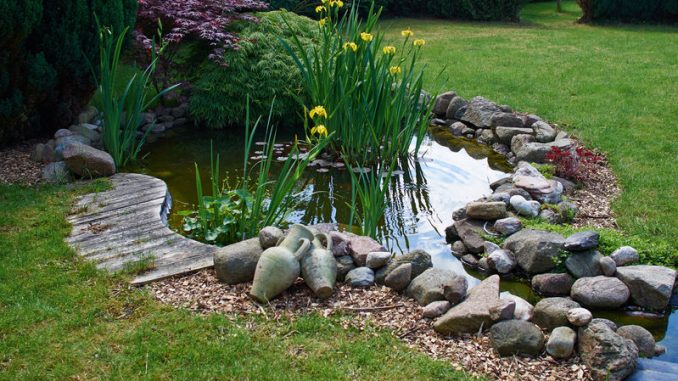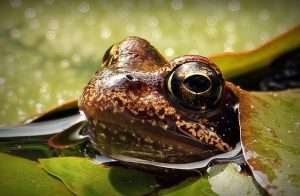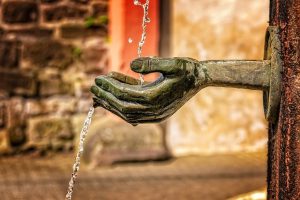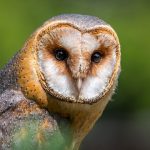
Up to 70 percent of our ponds have disappeared from the British countryside in the last 100 years, so garden ponds are increasingly important for wildlife.
Of all the habitats you can create in your garden to help wildlife and promote biodiversity, a garden pond is one of the most effective.
The larger the pond the more wildlife you can expect to attract, but don’t despair. Even if you only have a small space a small container pond, in a barrel or old sink, will provide essential drinking and bathing water for birds and a habitat for insects.
If you have room for a slightly bigger pond, ensuring you have a range of marginal plant species around the pond edge will encourage a rich diversity of insects and other invertebrates. Beautiful in their own right, they also provide an important food source for birds and other animals.

Attracting Amphibians to Garden Ponds
Garden ponds are extremely important for amphibians such as frogs, toads and newts, particularly in urban areas.
March is a key month for them. This is the month when they are all officially on the move; heading back to ponds to breed. Your garden pond will provide the perfect location.
Frogs are the first to start breeding in mid to late March.
Females lay their spawn at the edge of the pond. They prefer ponds which are shaded and relatively shallow with plenty of vegetation around the margins. You will see the eggs as they start to mature. This is when the clusters of spawn swell and float to the water’s surface.
There’s no such thing as too much frogspawn, so don’t worry if your pond seems to be full of it! Only one in 50 of the eggs laid will survive to adulthood, so the more the better. Don’t be tempted to transfer frog spawn to different sites; this can spread disease and will reduce the survival rate of the eggs.
Toads start to mate a couple of weeks after frogs.
Towards the end of March, they start to migrate back to their ‘ancestral’ pond site (the pond where they were spawned). They are heading ‘home’ to find a mate and reproduce.
It is the male toads who arrive first and wait for females. Toad spawn is easy to distinguish from frog spawn. It will appear as ‘ribbons’ of spawn around the stems of water weeds such as marsh marigold and water violet, rather than ‘mats’ of spawn floating at the pond edge.
Newts are the last to head to ponds to breed. They feed on frogspawn and tadpoles, so they time their return for when there is plenty of food around.
The best way to look for newts is to shine a torch in your pond in the evening. You may be lucky and catch the male newts performing their courtship dance.
Newt eggs are laid individually. The female carefully wraps each one in the leaves of pond plants such as water forget-me-not to protect them.
There are a few key plants to introduce into your pond in March which will help attract breeding amphibians. Brooklime and water forget-me-not will attract newts, and submerged plants such as hornwort and curled pondweed, will shelter frog, toad and newt tadpoles from predators and oxygenate the water.
Remember, amphibians are gardeners’ friends – as adults they love to eat slugs, so will keep the populations down naturally and protect your plants.
You will find a range of good quality materials for building your wildlife pond in our shop. Take a look!


Leave a Reply